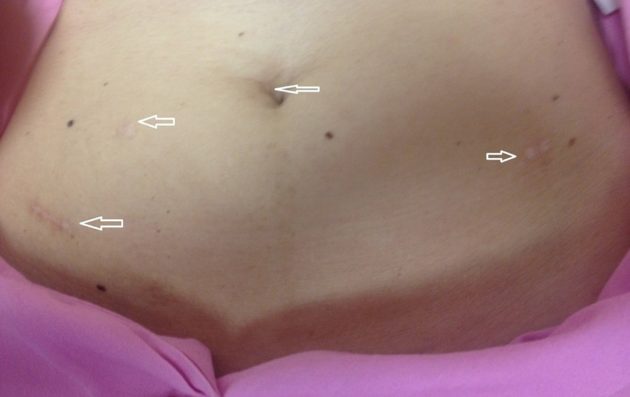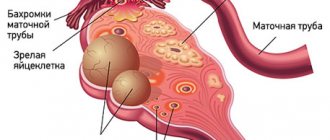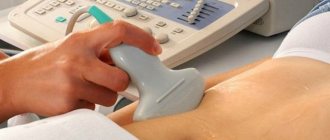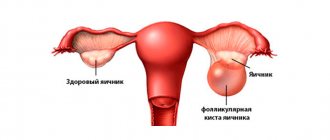Many women suffer from genital diseases. The consequences of such pathologies lead to infertility and other dangerous complications. In most cases, doctors have to resort to surgical intervention to save women from illnesses that bring physical and mental torment.
Thanks to the achievements of modern medicine and its evolution from abdominal operations to minimally invasive methods, most women were spared the inconvenience and lengthy recovery period. These techniques include laparoscopy (examination and surgery in the abdominal or pelvic area).
After this gentle treatment, for many patients the recovery period and pain during it are significantly reduced. But for everyone, recovery after surgery occurs on an individual basis. And since in most cases the goal is to become pregnant and bear a healthy child, it becomes important to find out when menstruation will occur after laparoscopy and how to determine whether reproductive functions have normalized?
Laparoscopy as a surgical and diagnostic method
The principle of laparoscopy is the ability to conduct research or surgery without resorting to a complete opening of the abdominal cavity. This method allows for a diagnostic analysis of the presence of diseases, and, if necessary, immediate surgical treatment.
With success, this technique allows us to identify and relieve patients:
- tubal obstruction;
- uterine fibroids;
- endometriosis;
- ovarian cysts;
- adhesive process;
- ectopic pregnancy.
Thanks to the cure for such diseases, a woman’s chances of getting pregnant and becoming a happy mother increase significantly. And one of the components of complete success after using the laparoscopic method is the attentive attitude of doctors and patients themselves to the recovery process. To do this, it is recommended to scrupulously monitor all manifestations after surgery and carefully monitor the menstrual cycle.
Diagnostics
There are several ways to diagnose endometrial hyperplasia:
- Ultrasound (transvaginal) is one of the effective and painless diagnostic methods that allows you to identify thickening of the endometrium, foci of hyperplasia and polyps.
- Hysteroscopy is an examination of the uterine cavity using special optical equipment, which allows a detailed study of the endometrium and detection of altered areas. During the procedure, a separate diagnostic curettage can be performed or a targeted biopsy can be performed, followed by a histological examination of the resulting material.
- Endometrial aspiration biopsy is one of the most effective diagnostic methods; the material obtained during the procedure is sent for research. Using histology, it is possible to detect atypical cells and confirm or exclude a malignant process.
- Hormonal studies are prescribed to identify hormonal disorders. The level of estrogen and progesterone is checked, and a study of thyroid and adrenal hormones may be prescribed.
To determine the correct tactics of surgical treatment, you must send me a complete description of the ultrasound of the pelvic organs, if possible, hysteroscopy and histology data, indicate age and main complaints to my personal email address. Then I will be able to give a more accurate answer to your situation.
“Abnormal uterine bleeding”, K. V. Puchkov, V. V. Ivanov, I. A. Lapkina “Laparoscopic operations in gynecology”, K. V. Puchkov, A. K. Politova
Features of menstrual cycle restoration after laparoscopy
Despite the fact that laparoscopy is a minimally invasive method in which, instead of an open operation, only three small punctures of the abdominal wall are performed, each body perceives it differently. And also surgical intervention on various organs of the female genital area can manifest itself in various variations.
One of the most important signs of normalization of the reproductive function of the female body is timely and normal periods. Based on the type and nature of menstruation after laparoscopy, it is easy for specialists to draw conclusions about the woman’s health condition and the need for further treatment.
Cyclicity must be stable
Probable Causes
The nature of the factors leading to scanty periods is very diverse. Menstruation is directly dependent on what contraceptives a woman uses and what medications she takes to maintain pregnancy.
One of the possible causes of scanty discharge during menstruation is abnormal functioning of the thyroid gland. A small amount of blood mucus during menstruation with thyroid dysfunction can lead to a complete absence of “red days of the calendar.”
Hormonal system disruptions caused by excess weight are also an unfavorable factor. The fact is that when a large amount of fat accumulates, an excess of estrogen (female sex hormone) is observed in the female body, which can affect the abundance of discharge.
Very scanty periods can be observed not only in overweight representatives of the fairer sex, but also in women who are underweight. This situation is caused by small doses of iron in the female body; all this is provoked by poorly applied diets and poor nutrition.
Structural changes in the lining of the uterus are a common cause of abnormal amounts of menstrual blood. This happens if a woman is sick with tuberculosis or has undergone curettage (due to injury to the uterus) in the early stages of pregnancy.
Scanty periods can be caused by many reasons, which can be systematized and presented as a list:
- Violation of metabolic processes.
- Lactation period.
- Hypovitaminization of the body.
- Anemia.
- Unfavorable stressful situation.
- Deviation from the norm in the structure of the genital organs.
- Side effects of some contraceptives.
- Infectious diseases.
- Thyroid diseases.
- Abortion.
- Excessive enthusiasm for diets.
- Having excess weight.
- Atypical work of the pituitary gland and ovaries.
If a woman notices that her periods are scanty, then she should not self-medicate or let this situation take its course. Contacting a specialized clinic will help you find out the true cause of such disorders and prescribe treatment.
The effect of laparoscopy on the menstrual cycle
The effect of laparoscopy on the female body is, as a rule, indifferent, but depends on which organ the operation was aimed at. In cases of diseases of the reproductive system and a favorable prognosis, menstruation most often becomes regular after laparoscopy and returns to normal.
And in some cases no changes occur. So, after laparoscopy of appendicitis, the course of menstruation does not change, and if any disruptions are observed, these may be the consequences of anxiety before the operation or the body’s reaction to the use of anesthesia.
Rehabilitation period
After laparoscopy, it is important to follow all the surgeon’s recommendations. This will shorten the recovery period. For rapid rehabilitation, early activation of patients is necessary. The faster a woman begins to move, the less likely it is that adhesions will form.

During the rehabilitation period, you must adhere to a diet. It is advisable to avoid salty, spicy foods, alcohol, and reduce the consumption of fatty and fried foods. It is advisable to eat often, but in small portions.
In the first 2 weeks after laparoscopy, sexual contact should be completely avoided. This is necessary to reduce the risk of developing infectious and inflammatory diseases. In the first month after laparoscopy, it is necessary to use protection. It is better to start planning a pregnancy after your period ends.
Cycle changes after laparoscopy
The laparoscopic method is considered a safe and relatively painless procedure. Often, two weeks are enough for a woman to fully return to normal. And menstruation does not undergo noticeable changes - this is due to laparoscopy on certain days of the menstrual cycle.
Laparoscopy and hysteroscopy at the same time and reviews about them
Moderate amounts of blood or spotting usually occur in the first two or three days after surgery. This is considered an absolutely normal manifestation associated with a violation of the integrity of the organs: ovaries, uterus or fallopian tubes.
Later, the discharge becomes sanguineous and gradually acquires a yellowish tint. There may be a slight change in the cycle. Heavy menstruation should not be considered a pathology.
The norm after laparoscopy is considered to be: a shift in menstruation by several days, a long delay, scanty or heavy menstruation. If these manifestations are not burdened by various complications and there is no severe pain, then they should not cause concern, but a visit to the gynecologist for regular examination is mandatory.
Menstrual cycle shift
Experts consider the first day of the new menstrual cycle to be the day of laparoscopy, so menstruation usually begins as in the patient’s standard cycle. Most likely, they will pass without visible changes, and will be accompanied by mucous discharge.
Discharge after the intervention will begin immediately and may last two to three weeks, which is considered a natural process. If the discharge begins to acquire a brownish or greenish tint and an unpleasant odor, then you should be wary - this may be a sign of infection and the onset of an inflammatory process.

Severe pain in the lower abdomen is one of the signs of the onset of the inflammatory process
Long delay
A cycle delay of more than three weeks can occur due to the effects of anesthesia and stress after surgery. After surgery on the fallopian tubes or ovaries, menstruation may not begin for a long time. But if there is a long delay, there is pain in the lower abdomen and alarming discharge, you should consult a gynecologist. In some cases, laparoscopy becomes a component of hormone therapy, so the absence of menstruation, both before and after it, is considered to be the norm.
Heavy periods
Knowing that internal organs take much longer to heal than the skin, you also don’t have to worry about having heavy periods. The first and even second periods after laparoscopic surgery can be bright and quite heavy. This is due to the healing process of damage to internal organs, and again, if there are no signs of inflammation, then such a process is considered normal.
When to see a doctor
There are some signs whose appearance in the postoperative period requires an immediate visit to the gynecologist:
- Bleeding after surgery for ectopic pregnancy, occurring earlier than 25 days.
- The discharge has become brown or green in color.
- A pungent odor is noticeable.
- Too much discharge.
- My period doesn't come for a long time. This problem is especially relevant during laparoscopy of the fallopian tubes.
We recommend reading the article about why lower back pain occurs during menstruation. From it you will learn about physiological changes in the body during menstruation, the causes of pain in the back and abdomen, and taking painkillers to alleviate the condition.
What to do if your period takes a long time? Read here.
The effect of hysteroscopy on the menstrual cycle
Hysteroscopy is a microsurgical examination of the uterus, appendages and fallopian tubes, which allows you to immediately remove identified pathologies. This method is considered more narrowly targeted than laparoscopy, but no less effective. And after it, the menstrual cycle may also undergo changes.
After hysteroscopy prescribed for polycystic ovarian disease (formation of multiple cysts), menarche will occur after taking hormonal medications. If the goal of the procedure is to restore the patency of the tubes, then you should hurry with pregnancy, since there is a high probability of progression of the disease.
When menstruation does not start for a long time, doctors prescribe medications to stimulate ovulation. Using hysteroscopy, biopsy material is taken for analysis to diagnose oncological processes in the reproductive organs, and also treat endometriosis. After the procedure, bleeding may occur, which patients often mistake for normal periods.
Also, with both procedures - laparoscopy and hysteroscopy, if there is damage to the uterus, ovaries or fallopian tubes, then menstruation may be absent for an indefinite amount of time.
What determines the normalization of the menstrual cycle during surgery?
In most cases, your period will return to normal after the first two to three months, and this may depend on several important factors. These include:
- hormonal status;
- general health status of the patient;
- age and physiological characteristics;
- professionalism of the surgeon performing the procedures.

If necessary, a number of drugs are selected to solve the problem
Practice shows that many operated patients have their periods on time and there are no cycle disturbances. Only in certain cases do menstruation not return to normal or come, but much later. This is often due to a weakened immune system or due to stress.
If for some reason the menstrual cycle does not improve after laparoscopy or hysteroscopy and the procedures do not bring the expected result, do not despair. First, you should visit your doctor, listen to his recommendations and follow the instructions exactly.
Most likely, a specialist will prescribe conservative treatment based on taking hormonal medications to stabilize the functions of the endocrine system, which will help smooth out the menstrual cycle and restore the reproductive capacity of the female body.
Risk group
The presence of an unfavorable factor in the anamnesis does not mean that the disease will certainly develop. The likelihood of developing endometrial hyperplasia is sometimes influenced by a combination of factors. The risk group includes overweight women suffering from diabetes, hypertension, polycystic ovary syndrome, etc. Frequent stress and a sedentary lifestyle increase the chances of developing the disease. In addition, it should be taken into account that in patients during menopause the disease is diagnosed several times more often.











